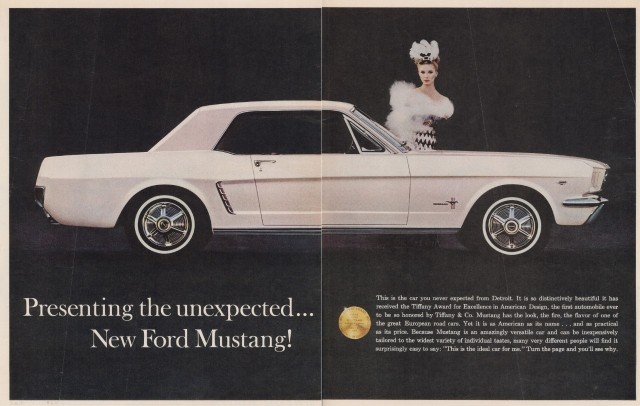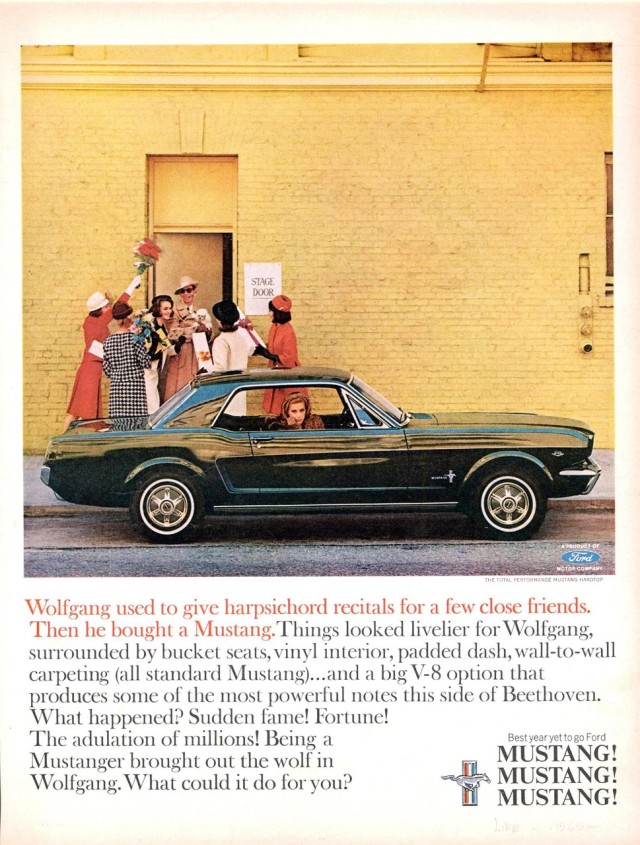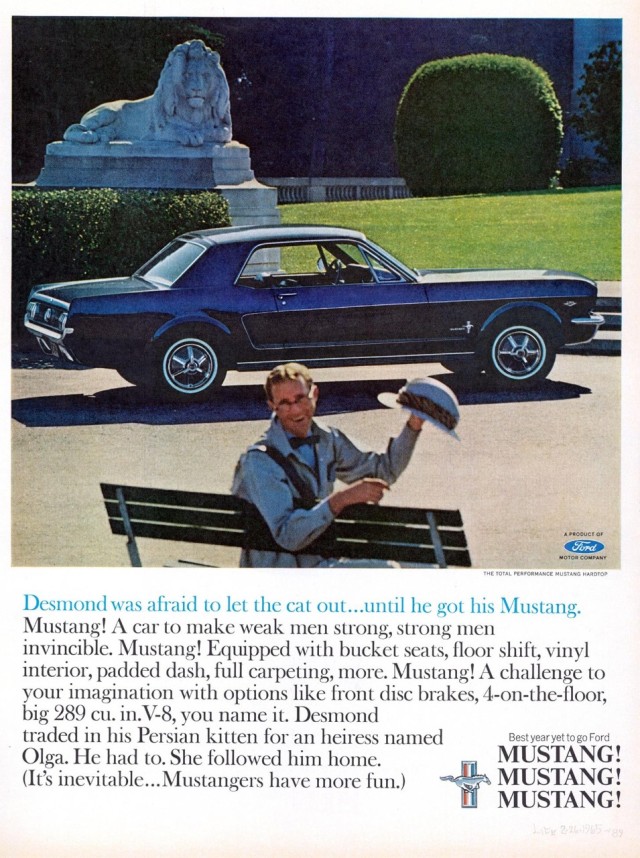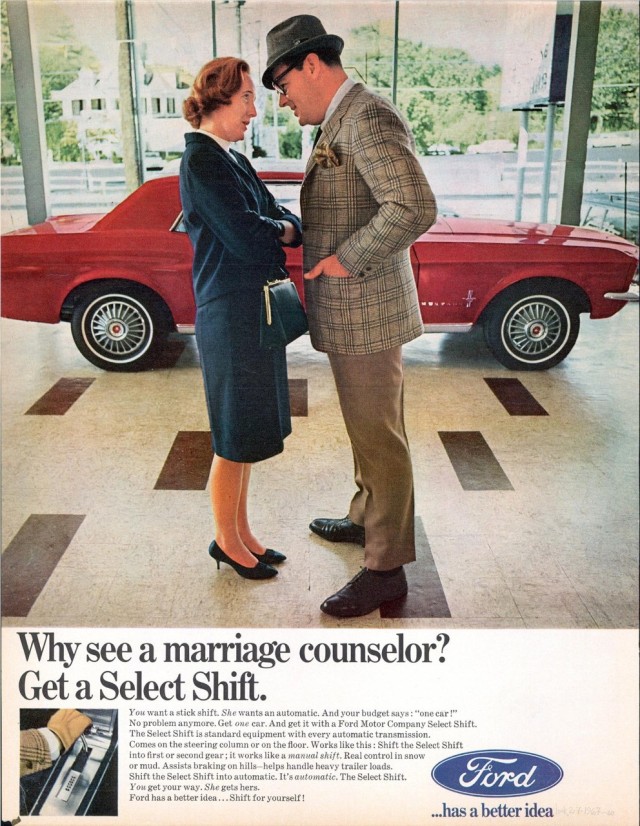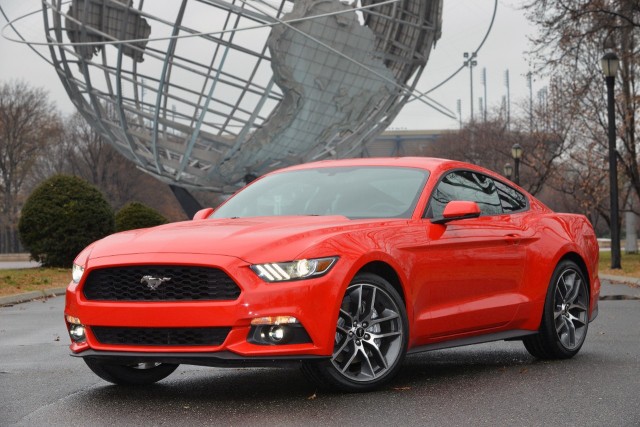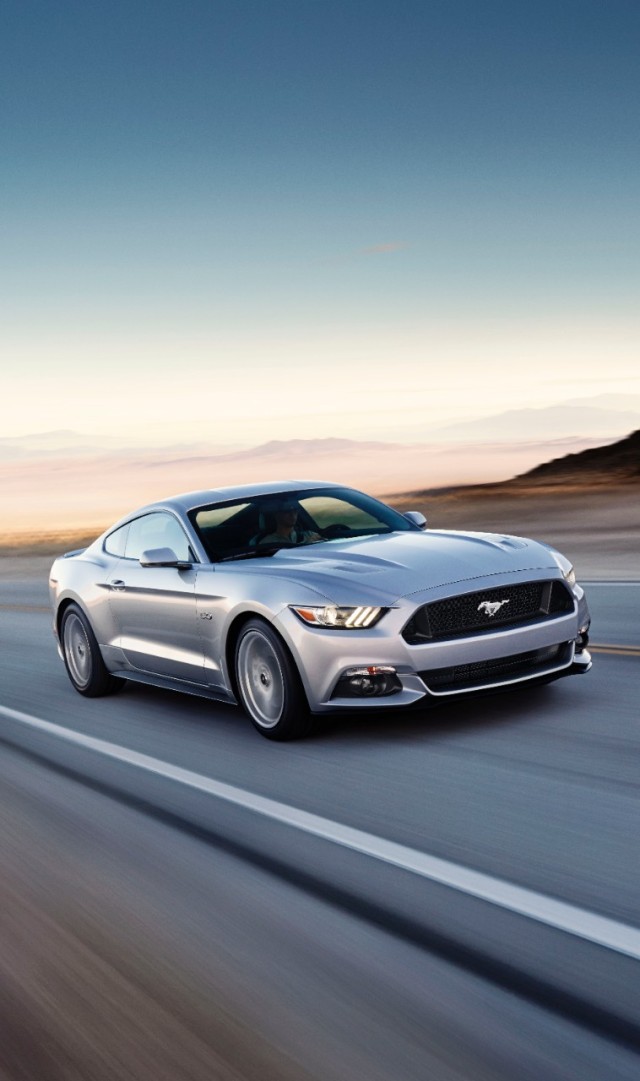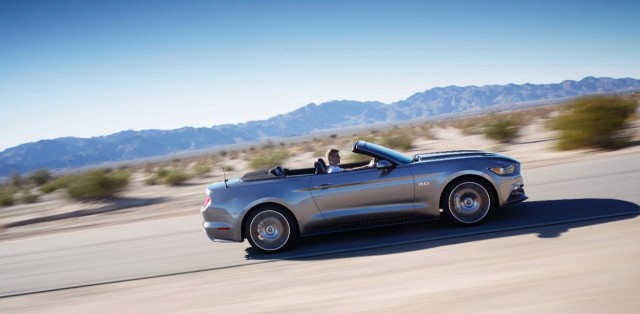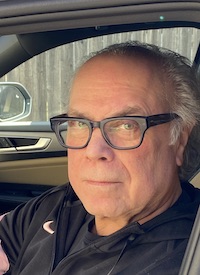It Changed Everything.
 Saturday, April 12, 2014 at 10:12AM
Saturday, April 12, 2014 at 10:12AM Editor's Note: The Ford Mustang was introduced to the public 50 years ago this week at the New York World's Fair. In honor of that momentous day in automotive history, Peter talks about the lasting impact of the Mustang in this week's column. - WG
By Peter M. De Lorenzo
Detroit. Saying there was change in the air in the U.S. back in 1964 doesn’t do justice to the transformational shift that was taking place. The nation was on the cusp of a cultural explosion encompassing music, social progress and civil rights, one that would rock America to its core, immersing us in the most turbulent decade in this country’s history, creating a seismic shift that still resonates to this day.
The "go-go" 60s was no myth. America back then was on a roll, a nation on an upward trajectory fueled by passionate blue-sky dreamers with a palpable sense that absolutely anything was possible. America had its foot down hard on the gas pedal, embracing everything new and different and wanting more of it all the time. The aura of the space program along with the burgeoning societal shifts had created a general sense of urgency to accomplish, and do, and be, and it swept the country like wildfire.
These prevailing winds did not go unnoticed in Dearborn, Michigan. A hotshot sales guy by the name of Lee Iacocca and his team of marketing rebels felt the pulse of the country changing too. They could hear it in the high-octane soundtrack provided by Motown, which was cranking out hit after hit just a few miles away. And they could feel it with the social change that was accelerating at a rapid pace as well.
Iacocca, a trained engineer, had discovered that he had a natural knack for sales and marketing, and having risen up through the ranks to run sales for the company, he was seeking a jump-start for Ford. Long a moribund brand in the market with zero sizzle, Ford was transformed as Iacocca began to crank it up with stylish, higher performing cars, ushering in the “Total Performance” era, which was a hugely successful marketing endeavor for the company and introduced us to icons like Carroll Shelby and the Ford-powered Shelby Cobra.
Iacocca’s marketing team knew that high performance unto itself served to jazz-up the Ford brand nicely, but they also knew that people were looking for something else. It was as if the whole country had started marching to a different drummer and “traditional” had all of a sudden become the dreaded code word for “establishment.”
That this anti-establishment vibe was running through the veins of the country was undeniable, and the Ford marketing team definitely didn’t want to be caught on the wrong side of the trend. Early in 1962 they decided that they had to come up with something new and unexpected (sounds eerily similar to today’s automaker wish list, doesn’t it?), and they had to do it right now.
But anticipating where the business was going was still a black art back then. Rather than relying on mountains of marketing research, gut feeling ruled the day. Iacocca and his team of marketers knew that aiming for the youthful, anti-establishment consumer was a huge risk but it was a risk they had to take, because the young consumers of the day wanted nothing to do with an “old man’s car” or anything that reeked of the status quo. But they knew, too, that style and sizzle weren’t enough, that if this new car wasn’t approachable and affordable for the legions of young buyers looking for something different, they were nowhere.
Which is why the Mustang was arguably the first serious attempt at platform or architecture manipulation and why it was made of existing components whenever possible. The Mustang borrowed heavily from the Falcon and Fairlane models for its underpinnings, including the chassis, drivetrain, suspension and even major interior fitments. Besides saving huge amounts in development costs, assembly ramp-up time was almost nonexistent. And Ford dealers had a ready supply of parts and a built-in knowledge base so that they could service the new car without a learning curve.
The Mustang name – in early proposals it was named after the famed P-51 Mustang fighter of World War II, but later came to life as a tribute to the American wild horse bearing the same name - first appeared on the beautiful, lithe, Mustang 1 Concept Car at the U.S. Grand Prix, in Watkins Glen, New York, on October 7, 1962. Driven around the track by Dan Gurney, the diminutive, mid-engine two-seater powered by a German Ford Taunus V4 gave little hint as to what was to come, except for the name itself.
(Ironically, Mustang was just one of the names considered by Ford at the time. Torino, Allegro, Thunderbird II, Avventura and Cougar were also considered. In the name of everything Righteous and Holy in the Automotive Universe the right choice was made, thank goodness.)
The Mustang 1 wasn’t totally disconnected from the final design for the Mustang, as a proposal for a two-seat configuration was originally considered. But gun shy due to the less-than-stellar sales performance of the two-seat 1955 Thunderbird, the company approved a four-seat design with front bucket seats and an admittedly cramped back seat.
The final Mustang design was the result of a design “bake-off” within Ford that was initiated by Iacocca. It was styled under the direction of Project Design Chief Joe Oros and design team members L. David Ash, Gale Halderman and John Foster, all of whom worked in the Lincoln-Mercury Division design studios.
It had been a long couple of years. A lot had happened in America during the development of the Mustang, and 1964 had already yielded a furious pace of creativity and news.
The Beatles made their U.S. debut on the Ed Sullivan show on February 9, 1964. Muhammad Ali became the heavyweight champion of the world by knocking out Sonny Liston on February 25th. Simon and Garfunkel released Wednesday Morning, 3 AM on March 10th. And The Rolling Stones made their U.S. debut with their album The Rolling Stones on, ironically enough, April 16th.
Iacocca and his team had bet everything they had on the new Mustang and the time had finally come to reveal it in the spring of 1964, on April 17th, at the New York World’s Fair. They didn’t know what to expect, and the press conference for the new car was decidedly low key, with none of the usual media bombast we hear at auto shows today and no promises made other than “we hope it will do well in the market,” as Iacocca said.
Needless to say, even though the Ford team’s worry was understandable, it proved to be unfounded. The Mustang made its debut as a 1965 model to a nation hungry for something special and different. It was simply the most seductive combination of style, attitude, size, nimble performance and practical affordability that $2,368 could buy, and it was an instant sensation.
How hot was the Mustang? After an initial annual sales forecast of 100,000 units, Ford dealers took 22,000 orders on the first day alone. Ford then went on to sell more than one million Mustangs in less than two years. Think about those numbers today and you have an idea of just how transformative the Mustang was to the U.S. auto industry. To this day, it remains the most successful launch in automotive history.
While searching for The Answer to appeal to youthful consumers who were leaning to the anti-establishment spectrum of the equation, Iacocca and his band of rebel marketers had stumbled on the magic – and timeless – auto industry formula that goes something like this: Image + Style + The Right Price = Pure Gold in the market.
There were so many things about the marketing launch of the Mustang that still resonate today that it’s worth it to piece together its real impact.
It was the first time that image was absolutely everything in this business, not to mention the genius of taking lowly Falcon underpinnings and transforming them into something provocative and desirable. (A method that the German manufacturers in particular are expert at doing today with their architecture magic, albeit at much loftier price points). Yes, the Corvette was all about image, too, but the Mustang was affordable to everyone.
The Mustang also pioneered the idea of unexpected, even interruptive, launch timing. Up until the Mustang launch, vehicles in this country always debuted in the fall. The launch of the Mustang in the spring put paid to the notion of the traditional “announcement day” in the business.
The Mustang also pioneered individual customization, with buyers having a choice of a coupe, fastback (the "Fastback 2+2" Mustang was not available at launch, but was first manufactured on August 17, 1964) or convertible, with six-cylinder or V8 engines, and manual or automatic transmissions. There was a wide range of colors and trim details available too. As a matter of fact, an early advertising tagline was “Mustang is the car designed to be designed by you.”
Given the options and choices available, the Mustang was perfect for the anti-establishment mood of the country, as buyers could define themselves through the ordering of their cars. The Mustang also solidified the industry adage that you can sell an old person a young person’s car, but you can’t sell an old person’s car to the young. Thinking that the Mustang would appeal to a defined group of younger buyers, Mustang marketers were stunned to find the car had an appeal that spanned all age groups.
And the social media buzz that manufacturers are so desperate to control and influence today? It’s nothing more than the latest form of the most powerful advertising, which is still word of mouth. The Mustang was a word-of-mouth star. Everyone in the country was seeing it, talking about it and wanting it. It was the four-wheeled equivalent of the frenzy surrounding the original iPhone.
There has never been a marketing launch like the Mustang in this business and we'll likely never see one like it again. Why? Too much has changed, for one thing. The upward trajectory America that thrived in the 60s has been replaced by a tentative, everyone gets a trophy and a hug America. The societal imprint is so decidedly different than it was back then that we’ll never see that level of interest surrounding the launch of a new automobile again.
The sad reality is that handheld devices have replaced automobiles in terms of creating fundamental desire among most younger people, and the chance of seeing a manufacturer come up with anything that has the impact of the Mustang in the modern era is less than zero.
But for a fleeting, magical moment in time Ford captured lightning in a bottle with the Mustang. And marketers to this day are still "cooking" the formula, trying to capture that kind of magic again.
The Mustang was not only the right car at the right time, it changed everything.
And that's the High-Octane Truth for this week.
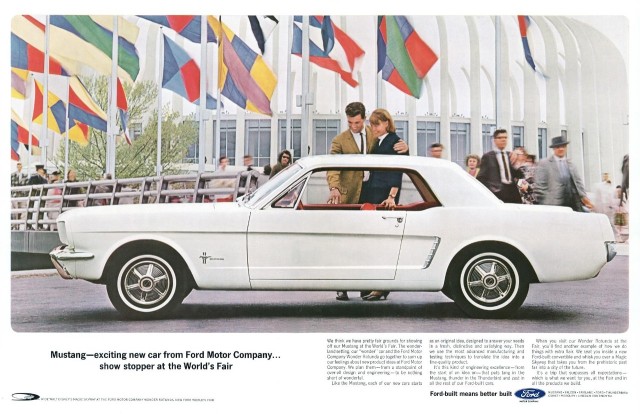
(Photos courtesy of Ford)
